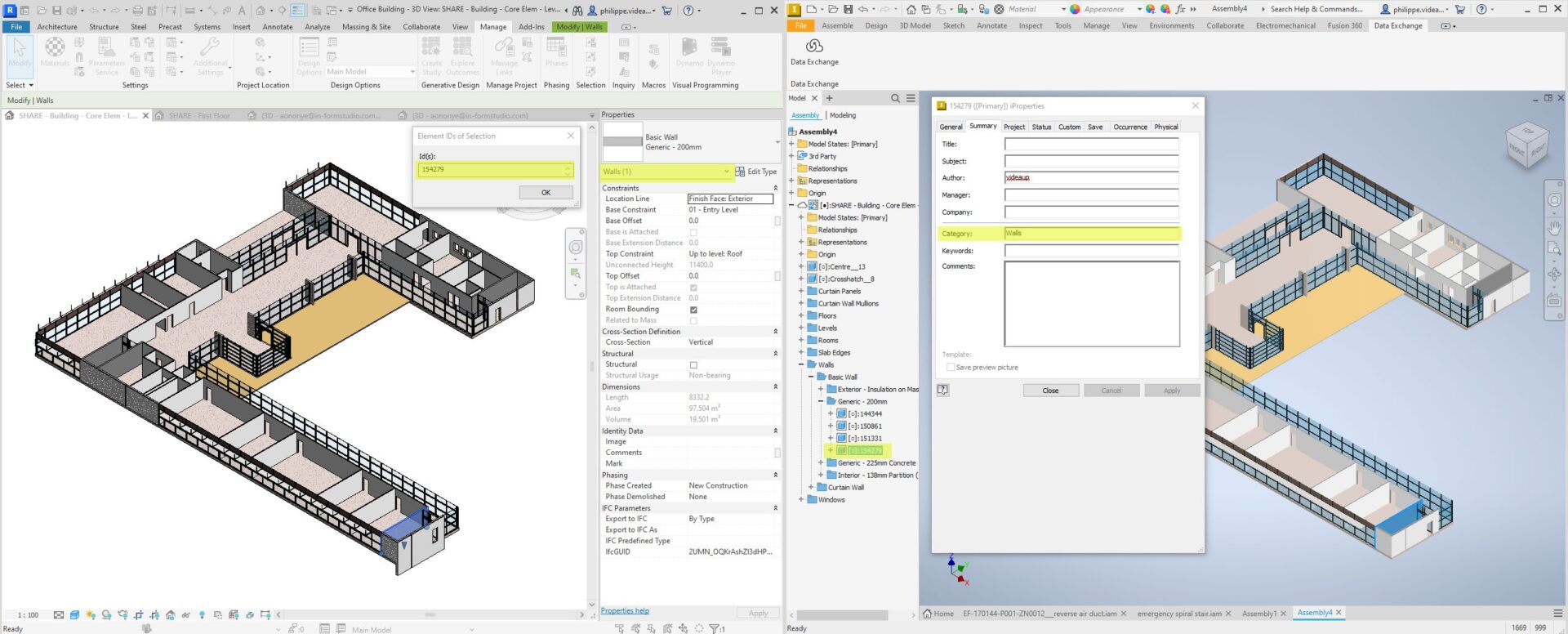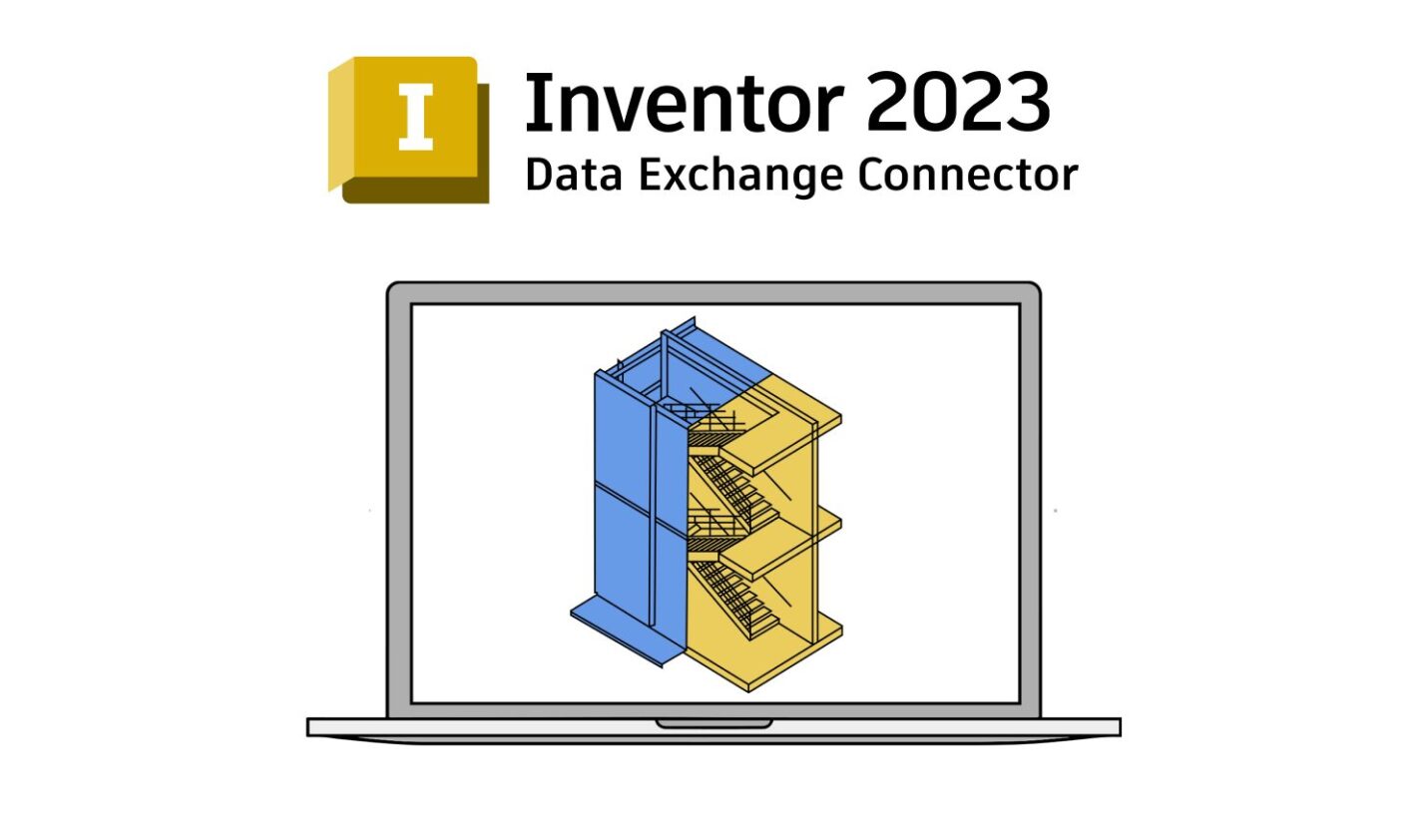
Today, we are excited to announce the launch of the full-fledged Data Exchange Connector for Autodesk Inventor (Early Access)! Building on last year’s integration, this connector now offers enhanced capabilities beyond just loading in exchanged data – now, you can also both create and update data exchanges directly within Autodesk Inventor 2023. With these updates, we’re continuing to expand how designers and engineers can use data shared with them – and also empowering them to curate and share the data they author in Inventor.
Accelerate your building design and manufacturing workflows
We developed the Inventor Connector as a starting point to bridge the interoperability gap between the manufacturing (MFG) and architecture, engineering, and construction (AEC) domains. Many of you design spaces and experiences that require input from HVAC, electrical, and mechanical disciplines – and the reverse often holds true too, where mechanical engineers need factory or building information to design equipment.
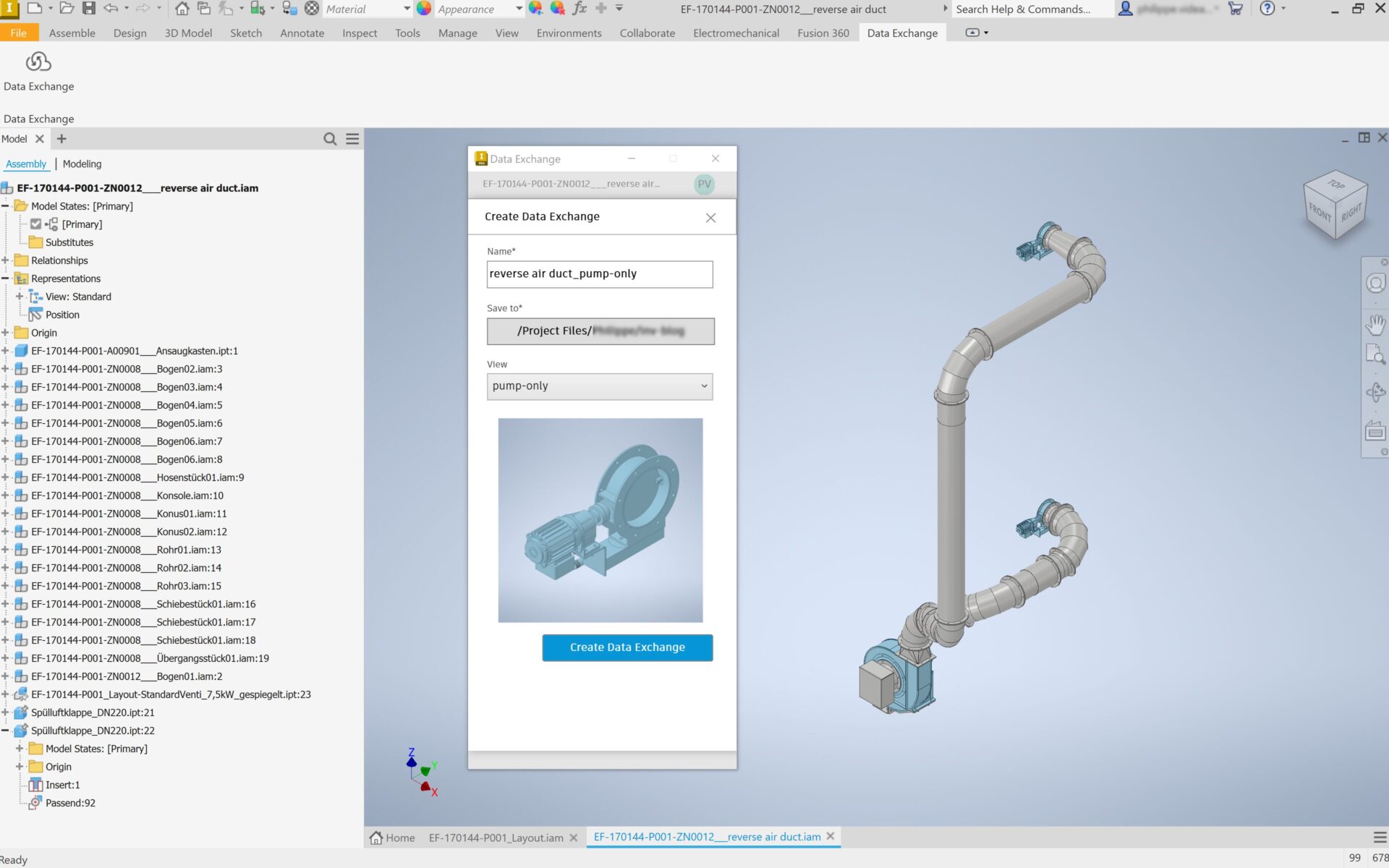
With this new Inventor Connector, you can do both. You can send curated design data from Inventor to apps like Revit, Rhino, Dynamo, Grasshopper, and Power Automate, as well as receive data from those tools in Inventor (except for Power Automate, which is a read-only connector).
Share curated data from Inventor with Revit, Rhino, and other apps
A key workflow we targeted with the Inventor Connector – an ask by many of you – involves sharing complex Inventor assemblies with Revit for factory and building layouts. You can now go beyond manual, bulky file-based transfers towards more a streamlined, cloud-based approach that focuses on just the data you want to share.
For instance, if you want to share just a portion of your Inventor assembly with a stakeholder who uses Revit, you can create an exchange that allows that stakeholder to quickly visualize the shared portion, bring it into their Revit model (as a Direct Shape), and map the iProperty “category” to the Revit category. As we continue to iterate on these connectors, we will enhance our cross-app mapping support and expand into more app-native object support too.
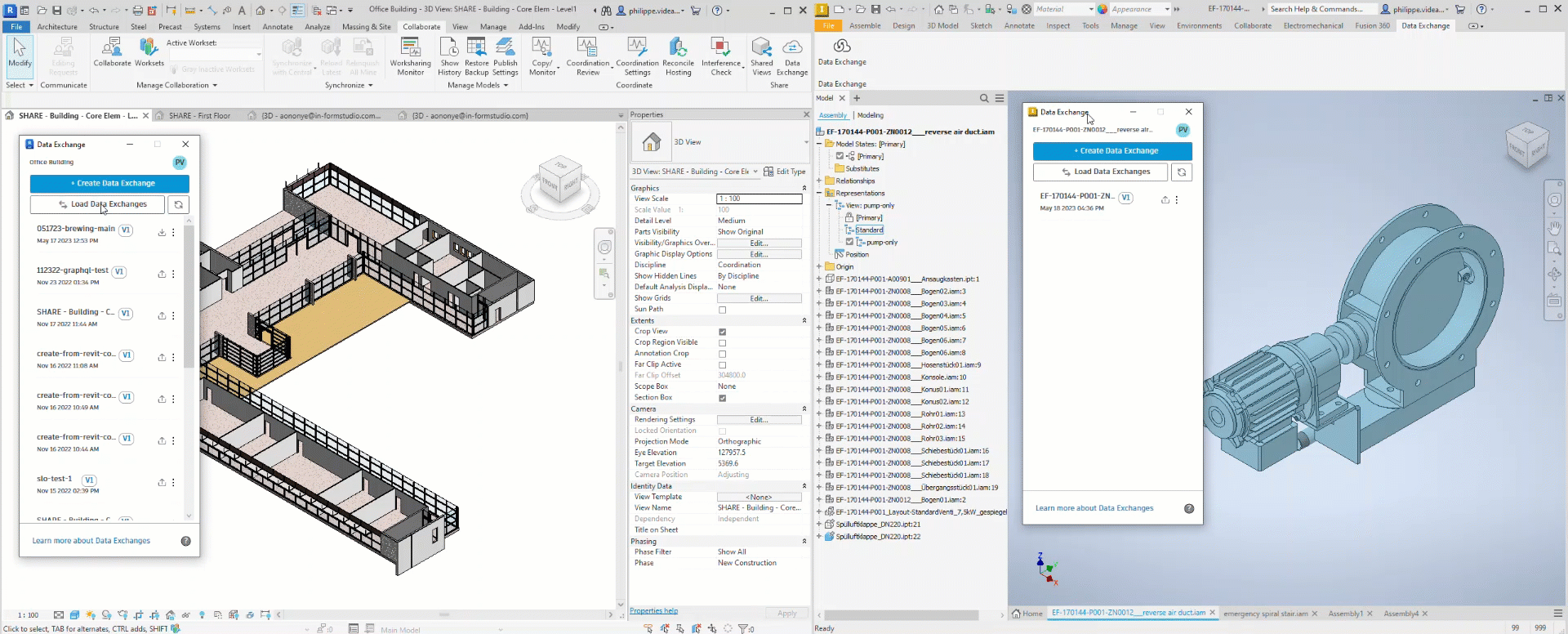
Not only can this workflow be useful for building and equipment alignment, but it can also be leveraged within the context of Revit’s powerful documentation and IFC export capabilities. An important deliverable in most AEC workflows, including relevant equipment information in documentation becomes easier with the Data Exchange Connector ecosystem, which takes the hassle out of importing / exporting bulky files.
What else is new in the Inventor Connector?
- Create and update exchanges from parts and assemblies from their respective Inventor environments. Transfer just the design data you need to share with other apps, empowering your team to work seamlessly across multiple software platforms, while keeping a durable connection with the source data.
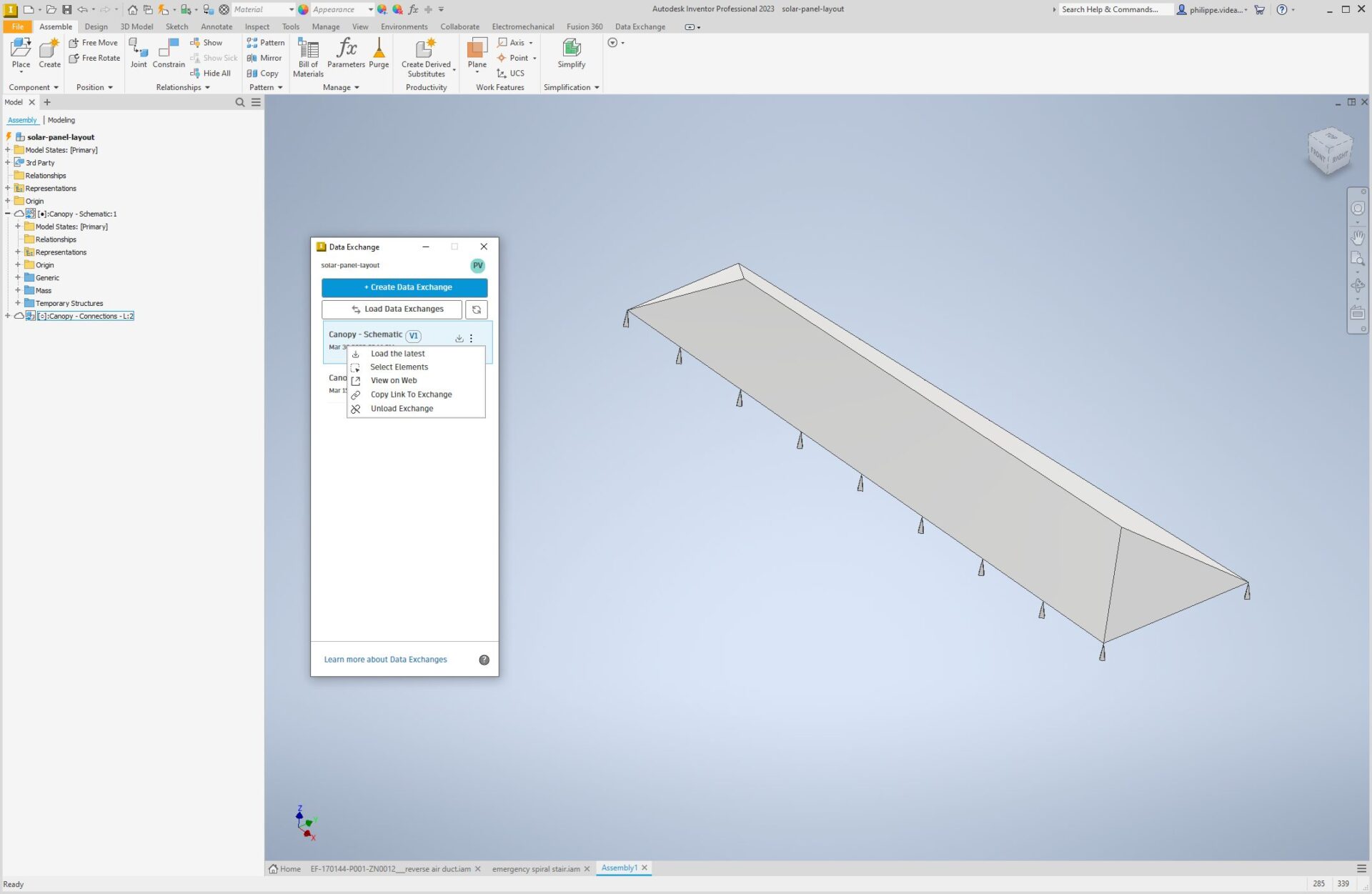
- Load Inventor assemblies as Revit categories, using the “category” iProperty. With this feature, you can visualize and manipulate your manufacturing design data directly within Revit.
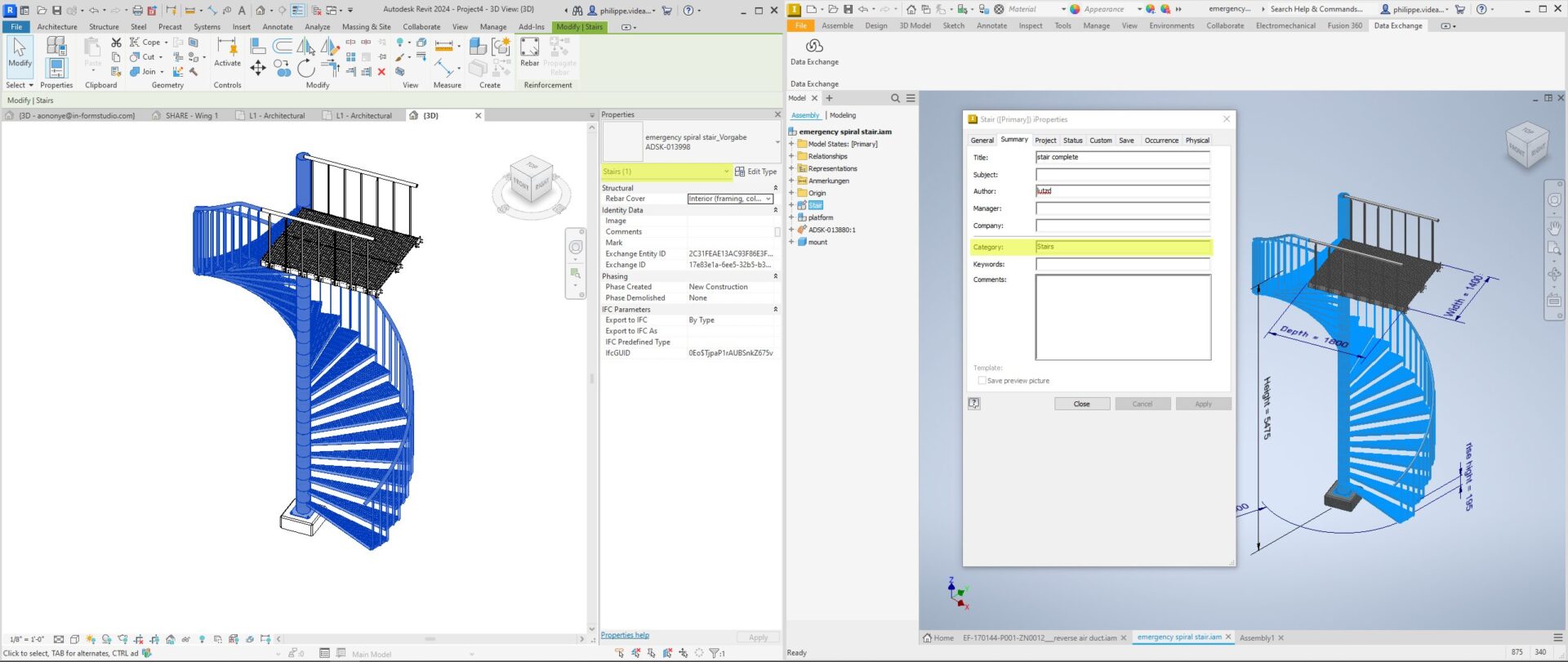
- Map Revit Properties to iProperties in Inventor. With this mapping capability, you can keep your design data synced between Revit and Inventor, reducing errors and ensuring consistency throughout the design process.
